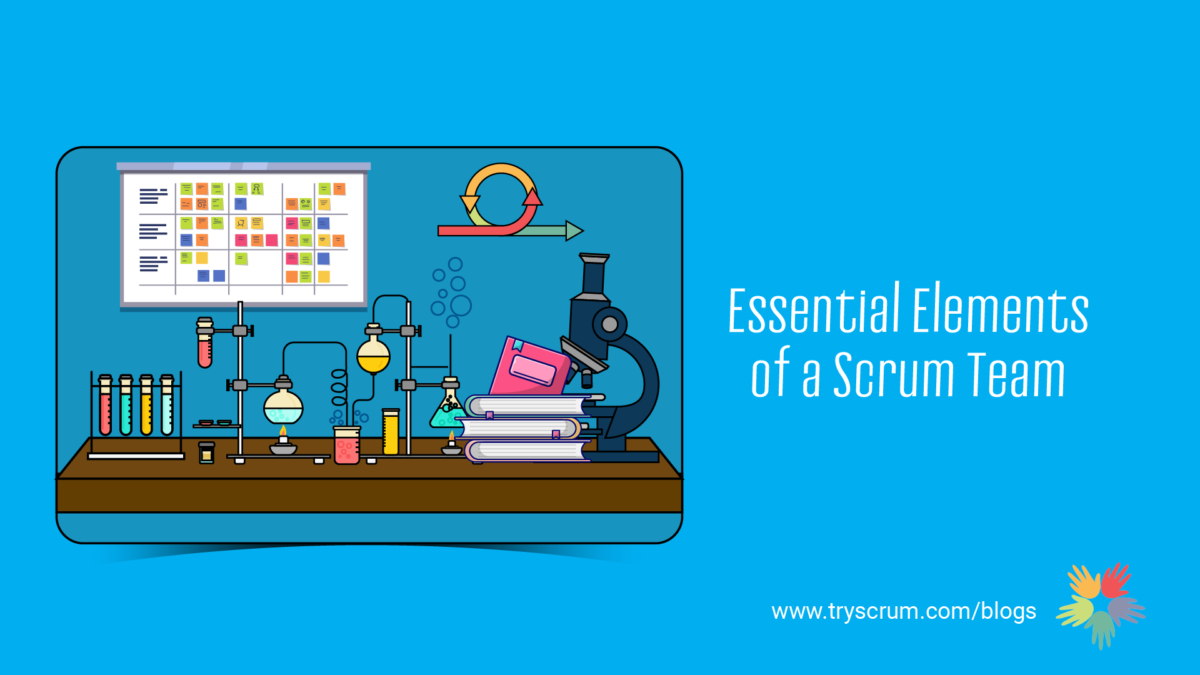Scrum is a popular framework for Agile software development that has been widely native by organisations of all sizes. One of the critical components of Scrum is the Scrum team, which is responsible for delivering a working product increment at the end of each sprint. In this blog post, we’ll take a closer look at the essential components of a Scrum team and the roles and responsibilities of the team members.
The Scrum team comprises three primary accountabilities: the Scrum Master, the Product Owner, and the Developers.
Scrum Master- They are responsible for ensuring that the Scrum framework is understood and that the team is adhering to the Scrum principles. In addition, they help the team remove any obstacles that may be preventing them from making progress and act as a coach to the team and other stakeholders, allowing them to understand the framework and their roles.
Product Owner –Product Owners are responsible for representing the stakeholders and ensuring that the team works on the product’s essential features. They are the voice of the customer and work with the developers to prioritise the backlog of work.
The Developers – A group of people that is responsible for building the product. It’s a cross-functional team that includes all the skills and disciplines needed to create a product. The team is self-organising, meaning that they decide how to build the product best and are responsible for delivering working software at the end of each sprint.
The Developers are not only responsible for writing code and testing, researching, designing, and documenting the product. Every member is expected to be collaborative, flexible, and willing to help wherever needed to ensure the team’s success and the project.
In addition, some organisations may include other roles, such as a scrum of scrums (coordination among teams who work independently)
One of the critical benefits of Scrum is that it encourages collaboration and communication among team members. This helps to ensure that everyone is working towards the same goal and that any problems or issues can be identified and addressed quickly. In addition, organisations can better adopt and implement the Scrum framework to improve their software development processes by understanding the essential components of a Scrum team and the roles and responsibilities of team members, and organisations can better adopt and implement the Scrum framework to improve their software development processes as well as deliver value.
It’s essential to mention that Scrum is flexible, and the team should tailor its practices to the specific needs of the product, organisation, and people.
About Author
Venkatesh Rajamani has more than 17 years of experience delivering working software in short, feedback-driven cycles. He has helped many organisations adopt agile software delivery practices, including large banking, payments, telecom, and product organisations. He started his career as a Software Engineer and spent almost eight years as a hard-core Programmer. He has worked for or with large software delivery organisations, including HP, IBM, Logica, Paypal, Ericsson, RBS and HID. He founded tryScrum.com in 2018 to execute his mission of Humanising Organisations. Venkatesh is fluent in 4 languages. He is based in Chennai, India and sets the overall direction for tryScrum. He is the world’s first to hold PKT, CAL-Educator, PST, CEC & CTC together. He loves reading books, travelling and public speaking.


